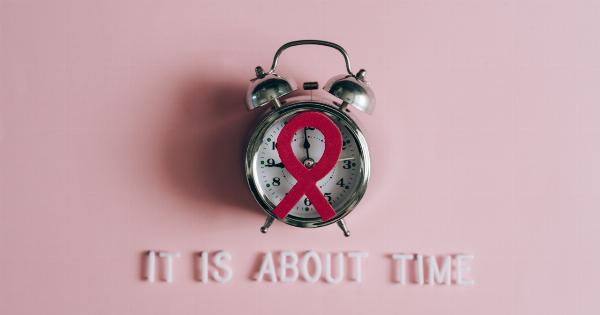HIV (Human Immunodeficiency Virus) is a sexually transmitted infection that primarily affects the immune system, leading to a weakened defense against other diseases and infections.
While the main mode of transmission is through sexual contact, various factors can enhance the transmission of HIV, including the presence of the virus in semen or sperm.
The Structure of HIV
HIV is a retrovirus that contains genetic material in the form of RNA. It targets and attacks CD4 cells (a type of white blood cell), which are crucial for the proper functioning of the immune system.
The virus uses CD4 cells to replicate and spread throughout the body, eventually leading to the development of acquired immunodeficiency syndrome (AIDS).
HIV and Semen
Semen is a bodily fluid that contains spermatozoa, or sperm cells, along with various other components such as seminal plasma. Among the different components present in semen, HIV can also be found in certain individuals who are infected with the virus.
The presence of HIV in semen plays a significant role in its transmission from one individual to another.
Factors Enhancing HIV Transmission through Semen
Several factors contribute to the increased likelihood of HIV transmission through semen:.
1. High Viral Load
Individuals with higher levels of HIV in their blood are more likely to have a higher viral load in their semen as well. This increased viral load in the semen significantly amplifies the risk of transmitting the virus during sexual activity.
2. Inflammatory Factors
Semen contains various inflammatory factors that can intensify the transmission of HIV. These factors can lead to immune cell activation and increased susceptibility to infection at the site of exposure.
3. Damaged Mucosal Barrier
In some cases, particularly when sexually transmitted infections, trauma, or inflammation are present, the mucosal barriers of the genital tract may become damaged.
This compromises the protective role of the mucosa, making it easier for HIV to enter the bloodstream through microscopic tears or lesions.
4. Co-Infections
Individuals who are co-infected with other sexually transmitted infections, such as herpes, chlamydia, or gonorrhea, may have higher levels of HIV in their semen.
The presence of these co-infections can also increase inflammation and mucosal damage, further augmenting the transmission risk.
5. Reservoir for Persistent Infection
The genital tract can act as a reservoir for persistent HIV infection due to the unique environment and immune responses. Even when viral load in the blood is suppressed through antiretroviral therapy (ART), HIV can still persist in semen.
This persistence contributes to the continuous risk of transmission during unprotected sexual activities.
Methods of HIV Transmission through Semen
The transmission of HIV through semen primarily occurs during sexual activities that involve the exchange of bodily fluids. The most common methods of transmission include:.
1. Unprotected Sexual Intercourse
Engaging in vaginal, anal, or oral sex without using condoms or other barrier methods can lead to the transmission of HIV if one partner is infected and has a detectable viral load in their semen.
2. Artificial Insemination
In rare cases, HIV can be transmitted through artificial insemination if the donor’s semen contains the virus. However, modern screening techniques and stringent guidelines have significantly reduced the risk of such transmissions.
Reducing the Risk of HIV Transmission
To mitigate the risk of HIV transmission through semen, individuals can take several preventive measures:.
1. Consistent and Correct Condom Use
Using condoms consistently and correctly during sexual intercourse can significantly reduce the risk of HIV transmission. Condoms act as a physical barrier, preventing the exchange of semen and other bodily fluids between partners.
2. Regular HIV Testing
Regular HIV testing is essential, as it helps individuals become aware of their HIV status.
Those who are unaware of their HIV-positive status are more likely to engage in behaviors that put themselves and their partners at risk of transmission through semen.
3. Antiretroviral Therapy (ART)
ART, a combination of medications used to treat HIV infection, can suppress viral load in the blood and semen, making the transmission risk significantly lower.
Adhering to ART as prescribed by healthcare professionals is crucial for reducing the risk of HIV transmission.
Conclusion
The presence of HIV in semen makes it a significant contributor to the transmission of the virus. Factors such as high viral load, inflammatory factors, damaged mucosal barriers, and co-infections can enhance the transmission risk.
Understanding these factors and adopting preventive measures like consistent condom use, regular HIV testing, and adherence to antiretroviral therapy are crucial in reducing the transmission of HIV through semen.




























